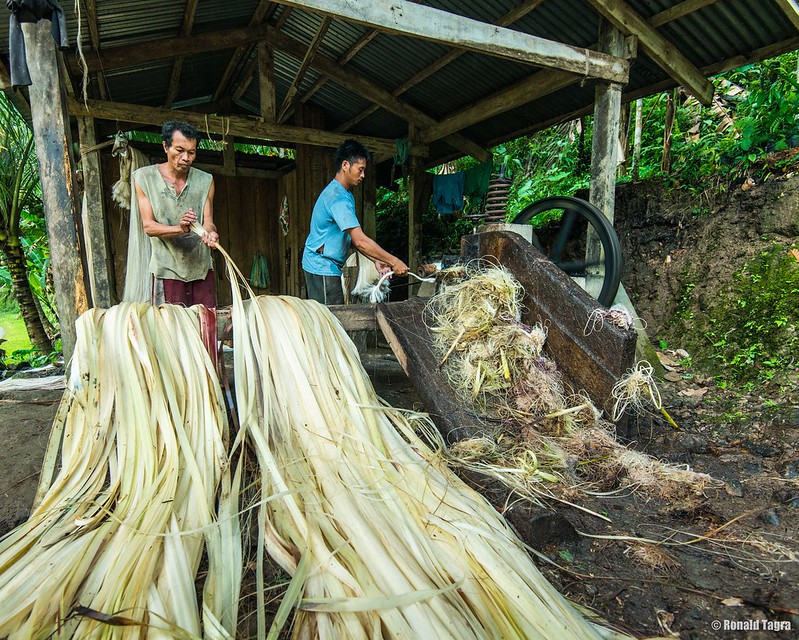Have you ever wondered what your Philippine banknote or perang papel is made of?
The truth is that it’s not just paper. It’s not just ordinary sinulid or some gold dusts. Our local banknotes are mostly made of cotton and 20% abaca.
In case you don’t know what abaca is, take a look at the photo below of abaca trees and abaca fiber being dried.
The trees look like banana trees, don’t they? It’s because they really do belong to the banana family.
According to Wikipedia, “Abacá (/ɑːbəˈkɑː/ ah-bə-kah; Spanish: abacá [aβaˈka]), binomial name Musa textilis, is a species of banana native to the Philippines, grown as a commercial crop in the Philippines, Ecuador, and Costa Rica. The plant, also known as Manila hemp, has great economic importance, being harvested for its fiber, also called Manila hemp, extracted from the leaf-stems. The plant grows to 13–22 feet (4.0–6.7 m), and averages about 12 feet (3.7 m). The fiber was originally used for making twines and ropes; now most is pulped and used in a variety of specialized paper products including tea bags, filter paper and banknotes. It is classified as a hard fiber, along with coir, henequin and sisal.”
Perhaps the BSP saw the exceptional value of the abaca fiber in making local banknotes. Perhaps they were thinking this must be “good” for the local abaca industry.
But what you’re gonna see in this video about how the abaca is planted, harvested, kept, and sold by our poor farmers in far-flung rural areas of the country will definitely break your heart. Our friend Kara David reports on this i-Witness documentary.
How do you see the value of your Philippine money now after watching this episode? What can you do to make the lives of our poor farmers, especially this family, at least “normal” if not good?
Continue to receive more information about money, financial instruments and investment vehicles by subscribing to RockToRiches|BurnGutierrez.Com for FREE.
Rock your way to abundance!
#moneyliferocknroll

i’ve been to singapore and they use plastic money. harder to counterfeit and lasts longer. Since it lasts longer the government could save on printing costs. However this would reduce the incomes of our local abaca growers.
So which is the better deal for the country as a whole?
what if we switched to plastic money then used part of the money saved to give the abaca farmers new jobs like new crops?
Conduct study on the effects of using plastic versus using natural materials. Though our agriculture should look at high value crops and other sources of income,we have too many small farmers who become smaller passing them on to their children from generation to generation cause of land reform and that’s the reason they have no money. Philippines should stop land reform and go into industrialization more employment opportunities. New technologies in farming make farming more efficient less manpower needed